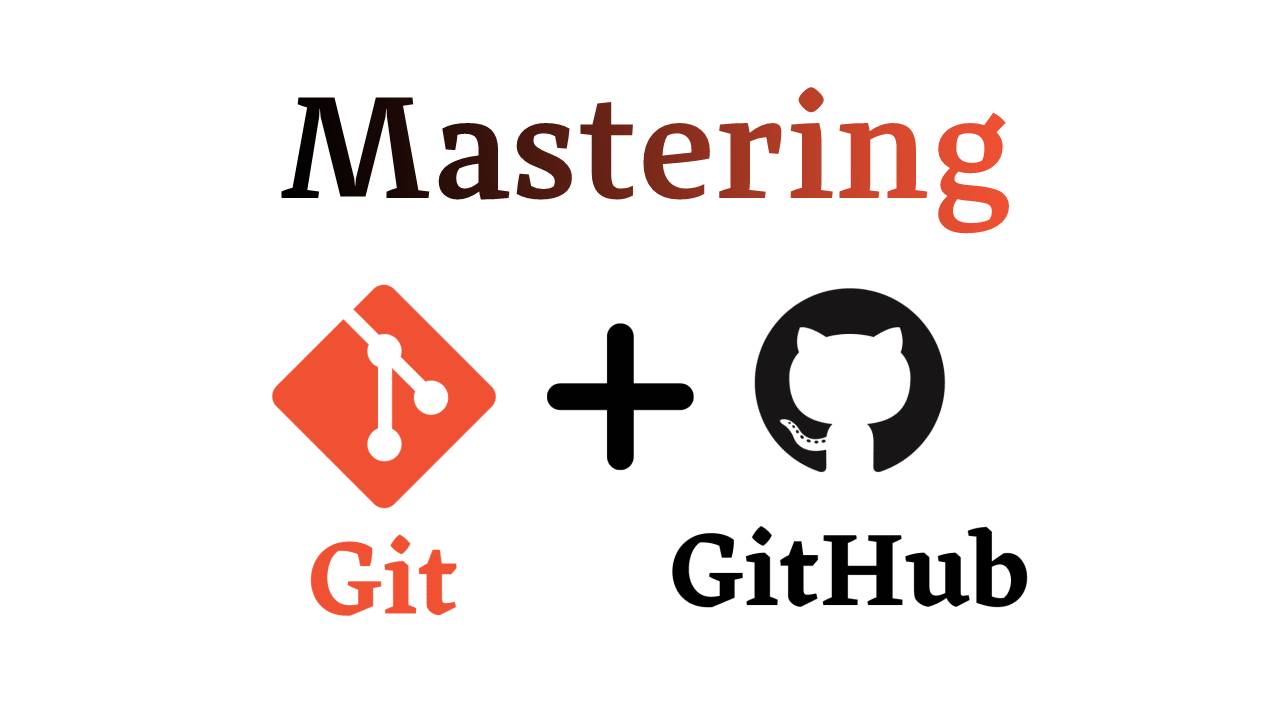Mastering Git and GitHub

Ready to unlock the full potential of Git and GitHub? Empower your software engineering journey!
Summary
- Unraveling the Art of Git and GitHub
- Introduction
- Git Fundamentals: Understanding the Architecture and Core Concepts
- Leveraging GitHub for Effective Collaboration
- Advanced Workflows
- Integrating Git with IDEs for Seamless Workflow
- Debugging Common Git Issues and Errors
- Resources and Tools for Continuous Learning
- Conclusion: Your Path to Git and GitHub Mastery
In the heart of the digital realm, where lines of code dance like fireflies in the night, there exists a secret language known only to the chosen few. A language that binds the creations of developers into elegant symphonies of software. This is the tale of mastering Git and GitHub, a journey that leads from chaos to harmony, from solitary coding to collaborative brilliance.
Unraveling the Art of Git and GitHub
There was a time in my life where I had no clue of Git or GitHub. I would often code entire projects with no aorta of version control. Then there came this project I had to work on (biggest and most complex project at the time), which included a frontend, backend, a console manager, implementing the web infrastructure (specially configuring and setting up load balancers, web & application servers, databases and monitors). Everything was going fine, till I messed up the console code when I tried tweaking it so my unit tests all pass. In an attempt to fix the system, I messed up the backend and the frontend codebases. I was more than 70% complete, and as I started to debug the problem, days turned into nights, and frustration grew like a storm over my head, and all I wished was for a way I could turn back time.
In this moment of desperation, I ruined everything out of frustration and had to start all over after a breakdown (yeah!, it was that bad). I put myself together and tried again, but this time, I sought for help to keep track of my changes. Then I came across Git. At first glance, it was a magical tool that promised control over chaos, a tool to rewind time and sculpt code like and artist shaping clay. With curiosity kindled, I embarked on a quest to unravel the mysteries of Git. My fingers trembled over the keyboard as I typed the first arcane commands - add, commit, branch, push, pull, fetch, merge - the words seemed cryptic, but their power was undeniable.
But Git was just the beginning of my odyssey. A new chapter unfurled as I discovered GitHub, a mystical realm where developers from every corner of the globe converged. Here, code was not just lines and logic; it was a tapestry woven by countless hands. Collaboration was the currency, and the pull request was the ritual through which offerings of code were made, examined, and merged into the collective masterpiece.
As I honed my skills (still am - learning never ends, aye!), I realized that mastering Git and GitHub was not just about commands and workflows. It was a transformation of mindset, a shift from solitary genius to a member of a vibrant community. I learned the art of code reviews, where critique was not a criticism, but a brushstroke that refined the work. I understood the power of version control, where mistakes were not regrets, but opportunities to learn and grow.
If you find yourself lost in the labyrinth of code, if your projects feel like a cacophony of changes, fear not. The path to mastering Git and GitHub is a voyage that will empower you to tame the chaos, to create with confidence, and to collaborate with the global symphony of developers.
Read through, as we unlock the secrets, demystify the jargon, and embark on a journey to become virtuosos of version control. The world of software development awaits, and with Git and GitHub as your allies, you shall fear no codebase, no collaboration, and no challenge.
Introduction
Version control is the bedrock of modern software development, providing the foundation for collaborative coding, change tracking, and codebase management. As a software engineer, mastering Git and GitHub can significantly enhance your productivity and streamline your development workflow. In this detailed guide, we’ll embark on an in-depth journey through Git’s architecture, core concepts, advanced workflows, collaboration on GitHub, integrating Git with popular IDEs, debugging common issues, and exploring resources for continuous learning. Let’s dive deep into the world of version control and harness its power to propel your software engineering skills to new heights.
Git Fundamentals: Understanding the Architecture and Core Concepts
1. Repositories and Commits: Building Blocks of Version Control
A Git repository is more than just a directory; it’s a time capsule capturing the evolution of your project. Central to Git are commits, which represent individual changes to your codebase. Each commit encapsulates a snapshot of your project, complete with a unique SHA-1 hash, author information, timestamp, and a descriptive commit message.
If you don’t have an account yet, join github and create a repository:

GitHub will always give us some directions afterwards, such as changing default branch name, adding files, committing and pushing to the remote branch:
echo "# mastering-git-and-github" >> README.md
git init
git add README.md
git commit -m "first commit"
git branch -M main
git remote add origin https://github.com/moforemmanuel/mastering-git-and-github.git
git push -u origin main
2. Branching and Merging: Navigating Parallel Universes of Code
Branches allow developers to explore different lines of development concurrently. The ‘master’ or ‘main’ branch typically serves as the primary development line. Creating feature branches enables isolated work on specific features, preventing disruptions to the main branch. Merging brings these branches back together, employing strategies like fast-forward and three-way merging to integrate changes seamlessly.
Let’s visualize that:

3. Staging and Committing: Crafting Pristine Commits
Git’s staging area acts as a preparatory ground before committing changes. This allows for selective commits, ensuring that only the intended changes are included. Using git add, you stage modifications, followed by git commit to permanently record changes with a clear intent. Granular commits enhance traceability and facilitate collaboration.
Here’s what it looks like:

4. Remote Repositories and Push/Pull: Bridging the Gap Between Local and Global
Collaboration extends beyond individual machines through remote repositories. Platforms like GitHub provide hosting for remote repositories, enabling multiple contributors to work together. With git push, and as illustrated above, you upload your local commits to a remote repository, while git pull fetches and merges changes from the remote to your local copy, ensuring synchronization and alignment.
Leveraging GitHub for Effective Collaboration
1. Forking: Creating Your Playground for Contributions
Forking is the gateway to participation in open-source projects. It involves making a copy of a repository to your GitHub account. You can freely experiment with changes in your fork without affecting the original repository. When ready, propose your changes back to the original repository by creating a pull request.

2. Pull Requests: Facilitating Code Review and Discussion
Pull requests are a cornerstone of collaborative development on GitHub. When you’re satisfied with changes in your fork, you initiate a pull request to merge your changes into the original repository. Pull requests facilitate peer review, where colleagues provide feedback, suggest improvements, and discuss code changes within the context of the pull request.

3. Issues and Projects: Organizing and Tracking Work
GitHub’s issue tracker acts as a virtual to-do list. It helps manage tasks, enhancements, and bugs by creating issues that can be assigned, labeled, and associated with specific commits or pull requests. GitHub Projects offer a visual overview of tasks, letting you organize work into customizable boards for efficient project management.
Advanced Workflows
1. GitFlow Workflow: Streamlining Collaborative Development
The GitFlow workflow presents a structured branching model for complex projects, and serves as an alternative Git branching model that involves the use of feature branches and multiple primary branches. It introduces distinct branches for features, releases, and hotfixes. The develop branch serves as the integration point for ongoing work, while feature branches isolate the development of individual features. This approach promotes a streamlined collaboration process and controlled release management.

Read more on Gitflow
2. Feature Branches: Empowering Parallel Development
Feature branches amplify collaboration further by allowing developers to work on isolated features concurrently. Each feature gets its dedicated branch, enabling focused development and independent testing. Once a feature is complete, it can be merged back into the main development branch.
Integrating Git with IDEs for Seamless Workflow
There are extensions and integrations for Git in IDEs; for example (not limited to):
1. Visual Studio Code (VSCode): A Haven for Git Operations
VSCode offers a seamless Git integration experience directly within the IDE. Through the Source Control pane, you can stage changes, commit, pull, push, and handle merge conflicts effortlessly. Extensions like GitLens provide valuable insights into code history and authorship.
Extensions like GitLens provide valuable insights into code history and authorship.
Git Graph also allows you to view a Git Graph of your repository, and easily perform Git actions from the graph.

2. Eclipse and EGit: Melding Version Control with Your IDE
Eclipse users can enjoy Git integration through the EGit plugin. EGit brings Git capabilities into Eclipse, enabling you to clone repositories, manage branches, commit changes, and perform other Git tasks without leaving your familiar development environment.
Debugging Common Git Issues and Errors
1. Resolving Conflicts: Navigating the Tides of Merge Conflicts
Merge conflicts are a natural part of collaborative development. They occur when Git encounters conflicting changes that it cannot automatically reconcile. By understanding conflict markers, using git mergetool, and collaborating with team members, you can confidently resolve conflicts and ensure code integrity.
2. Reset and Revert: Rewriting History with Caution
git reset and git revert are powerful tools for managing commit history. Resetting allows you to move branches to specific points in history, potentially discarding commits. Reverting, on the other hand, creates a new commit that undoes specific changes. These commands demand careful consideration to avoid unintended consequences.
Resources and Tools for Continuous Learning
1. Online Learning Platforms: Your Gateway to Git Mastery
Websites like GitHub Learning Lab and GitHub Skills offer interactive tutorials and exercises catering to all skill levels. These platforms provide hands-on experiences that reinforce Git concepts and workflows.
2. Git Clients: Navigating the Seas of Version Control
Desktop applications such as Sourcetree, GitHub Desktop, and GitKraken offer user-friendly interfaces for Git operations. They simplify complex commands and provide visual representations of branching and merging.
3. Books and Courses: Deep Dives into Git Wisdom
Books like Pro Git by Scott Chacon and Ben Straub provide comprehensive insights into Git’s inner workings. Online learning platforms like Atlassian Bitbucket, Youtube, Udemy, Coursera, and edX host courses spanning from beginner tutorials to advanced techniques.
GitHub Docs is another excellent resource.
Conclusion: Your Path to Git and GitHub Mastery
As you navigate the intricate landscape of Git and GitHub, remember that mastery comes with practice, persistence, and continuous learning. By understanding Git’s architecture, embracing collaboration on GitHub, adopting advanced workflows, seamlessly integrating Git with your preferred IDE, and confidently resolving common issues, you’ll embark on a journey toward becoming a proficient software engineer adept at version control. As you embark on your coding odyssey, keep exploring, experimenting, and sharing your newfound Git and GitHub expertise with the global community. Happy coding!
